Desert Water Harvesting

A desert water harvesting system is designed to capture storm water runoff and separate out floating debris and solids and then filter clean water for storage into an underground storage system.
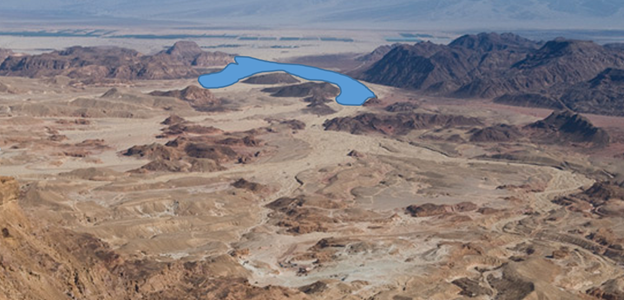
Above is an image taken in “Timna Geological Park” in Israel of a watershed region. A watershed is a large region of sloping ground which “sheds” water like water “sheds” off of a duck’s back.
The mountainous high ground of this “watershed” region causes the rain water to be shed from its high slopes and it will run down toward lower elevations. Water runoff gathers into small streams and these streams gather into larger streams and these gather into bodies of flowing water the size of rivers! The total accumulated rainfall of one heavy rain can gather into one lowland mountain pass in great volumes causing a flash flood. The drainage from the surrounding areas in this image will gather and flow through this low-lying valley pass between the mountains at lower elevations. (The “blue-color” highlight seen in the image above would be a good location for a desert water harvesting system).
Flood Water Runoff
Flood water runoff is the water that accumulates during desert rains and flows down toward the lowest point of elevation. If this fresh water is not captured and preserved it will be lost when it drains into the dead sea or ends its journey into an ocean.
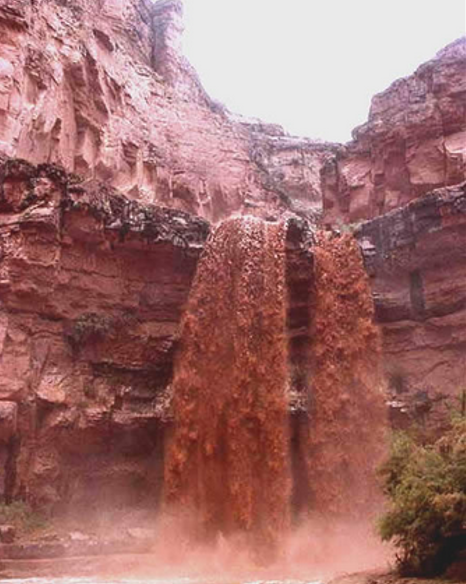
Above is an image of rain water runoff that occurs during a desert rain storm. Sometimes this rainfall may occur as infrequently as once in two or three years. It is for this reason that capturing and preserving desert rainwater runoff is of vital importance because all life in the desert depends upon water.
Water Absorption Field
A water absorption field is comprised of large area floodplains behind earthen berms which retain annual or semi-annual desert flood waters. Risers and drain tiles can be installed throughout the floodplain to transfer water into settling tanks on the perimeter of the field.
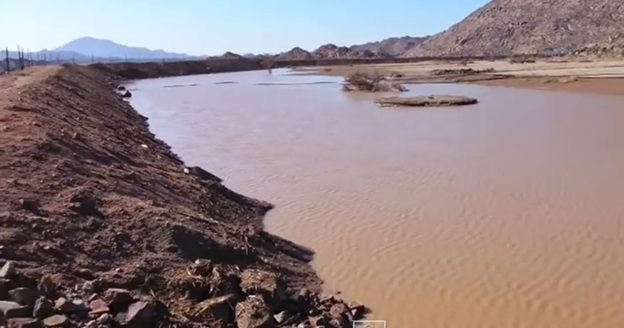
Above is an image of a floodplain surrounded by an earthen berm designed to capture and hold desert rainwater runoff. However, if this water is not filtered and placed into underground storage then a large percentage of this water will be lost due to evaporation. When berms are used to capture and retain desert floodwater-runoff then the water will stand sill and allow the sediment and silt to settle out. Silt is so fine that it can form a impenetrable barrier when wet. This causes the captured water to be unable to be absorbed into the earth below much like water standing in a concrete swimming pool. It is for this reason that the floodplain located behind the berms must have risers and drain tiles installed before the flood waters arrive.
Drain Tiles
A drain tile is a corrugated plastic hose with “slots” cut into its sides which are able to absorb water. These hoses are often used by farmers to drain low spots of standing water in their fields. Below is an image of a piece of drain tile showing the slots cut between the corrugated ridges.
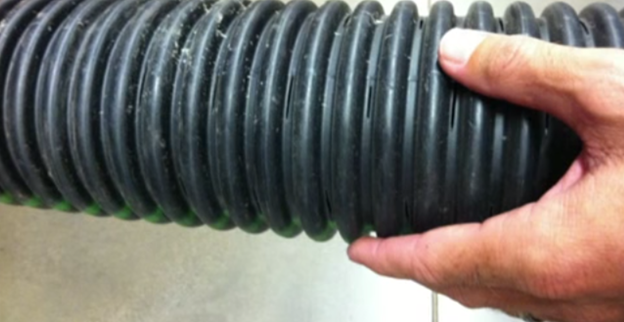
It is these fine slots that allow water to be absorbed while blocking the “larger-sized” particles of debris and sediment from entering the drain tile (which is made of plastic corrugated hose).
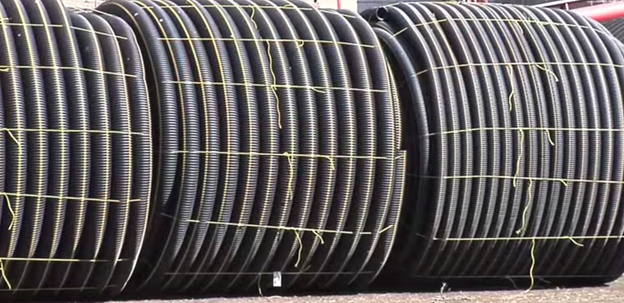
Drain tiles come in large rolls and these are used with special-made machinery to bury them under the soil.
Drain Tile Plow
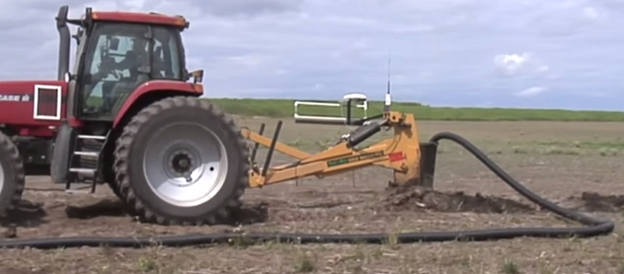
A tile-plow is pulled behind a tractor and buries the drain tile at about 1-meter deep under the soil. The image above shows a tile-plow mounted with a GPS unit for exact tile placement. Precise placement is important so the farmer can install the drain tiles in exactly the right location (at the lowest elevation) where the drain tiles are needed to drain swampy land and places of standing water in his field.
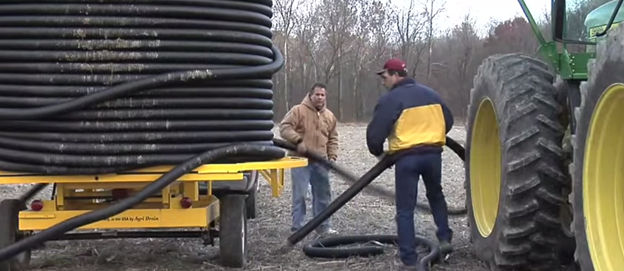
A “stringing-trailer” is used to string out the drain tile hose along the path of the tile plow. The image above is that of a “stringing-trailer” used to lay out the drain tile hose along the path of the drain tile plow which will be used to install it under the ground.
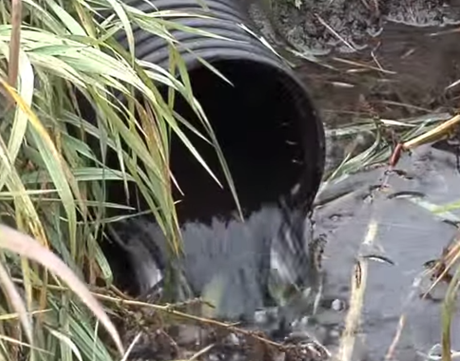
Water filtrates through the soil and enters the drain tile as clean water. The drain tile can absorb a lot of water from areas where soils are water-saturated. Above is an image of clean water flowing from a drain tile as it enters a drainage ditch on the perimeter of a field.
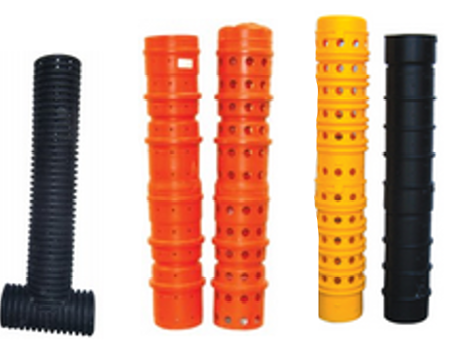
Above are some images of drain tile risers which are connected to the drain tile corrugated hoses buried beneath the soil. The riser on the left side of this image shows a “Tee-Connection” on the bottom which can be connected to the buried drain tile hose. Sometimes these risers are made with bright colors so that they are highly visible so the farmer does not strike them with his farm machinery. These risers protrude vertically from the ground in areas of standing water. They have slots or holes in them to allow water to drain into them. If the soil has much “silt” (which can plug up the drain slots) then the water will constantly rise above the plugged up slits. The water that is above the silt-level on the bottom will then be able to drain into the open slots above the plugged-up silts. This is a good solution to drain away standing water on hillside terraces so that it does not wash away the top soil by water erosion.
Under Ground Water Storage Caverns
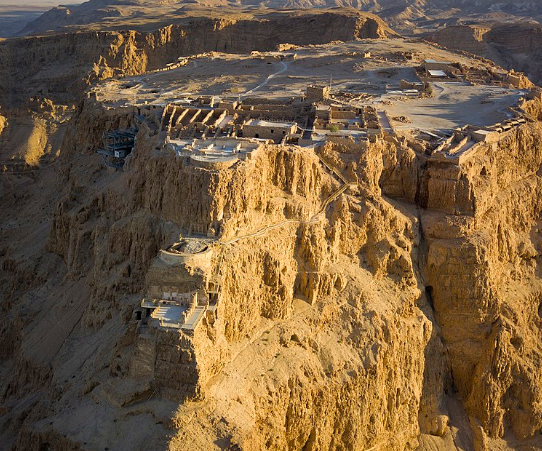
Above is an image of Masada which was a mountain fortress built by King Herod. It is located in the Judean desert not far from the Dead Sea. It was intended to serve as a place of refuge for Herod in the event of war or unforeseen social upheaval. He had constructed palaces and bath houses and warehouses for food storage. But the most amazing part (and the most necessary) was the underground water storage system which Herod built.
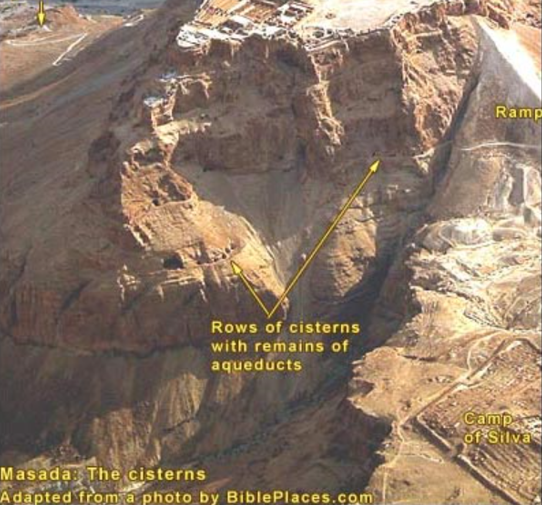
The image above is that of Masada viewed from a northwestern perspective. Here King Herod ordered that aqueducts be cut long the sides of the mountain. The Masada plateau slopes toward this northwestern side of the mountain so any water runoff from rains will flow down this side of the mountain and collect within the aqueducts. These aqueducts cut long the cliff-face would then channel rainwater-runoff into the cisterns. When one cistern was full then the water would flow into the next cistern cut in the series along the aqueduct.
The image above shows that the portals (openings into the cisterns) are still visible. Also, the line of aqueducts can still be seen which were cut out of the rock face by hand tools and manual labor. These aqueducts channeled rainwater runoff into these series of portals which emptied into underground cisterns for water storage.
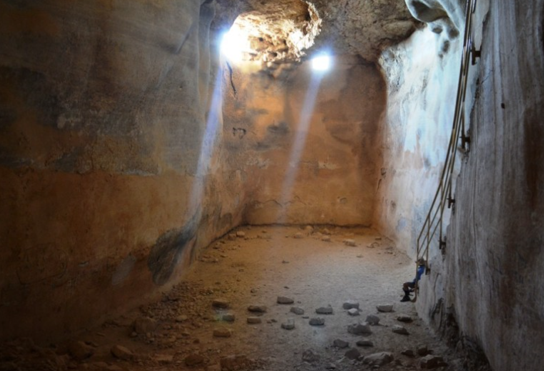
Above is an image of the interior of one of the cisterns carved out of solid rock by Herod. Some steps were cut (seen on right side of image) for people to enter the cistern to fetch water. This image shows a tourist sitting on the bottom of these steps (for size comparison). The bright lights above are from sunlight shining through several portals where the water from the aqueducts outside would enter into this cistern.
The size of these water storage cisterns was massive! The volume of water that could be held in these Masada cisterns was 10.5 million gallons or about 40,000 cubic meters! This was enough water to last for years even if the rain came infrequently in this arid region. Herod stored so much surplus water he even operated saunas and had swimming pools built on location. Herod would place crustaceans in the cistern water to keep the water “fresh” while in storage.
King Herod’s Masada fortress shows how just a relatively small flattop mountain could be used to gather and store rainwater in cisterns for use until the rains came again within a year or two. This water collection and storage system was all built with manual labor. How much more could be accomplished today using modern excavation and mining machinery!?
Rainwater Runoff – Capture and Storage
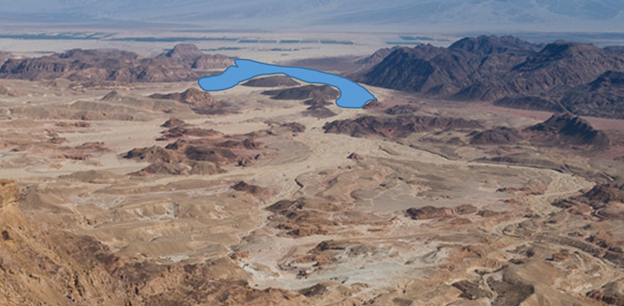
Again, this brings us back to our example above where a large watershed region flows down a mountain side and then accumulates into a narrow mountain pass between two mountain ranges. It is in this region (highlighted in blue color above) where we could build a water catch system. We could build an earthen berm in the gap between the two mountain ranges. This would create a floodplain behind the earthen berm which would collect rainwater runoff. The standing-water behind the berm would then drop its load of sediment and silt leaving relatively cleaner water on top. The floodplain located behind the berm could be filled with underground drain tiles with vertical tile risers throughout the floodplain. These tile risers would collect the water while leaving most of the sediment and silt on the floor of the floodplain. The somewhat cleaner water could then be transferred into filtration troughs for further cleaning.
Filtration Troughs

Above is an example of “filtration troughs” which have holes at the bottom to allow water to seep into. These can be used for “secondary-filtration” after the water is moved from the floodplain (leaving most of the sediment and silt behind.
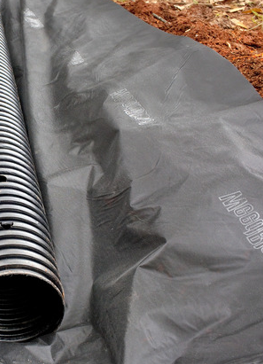
Above shows a section of drain tile sitting upon a moisture barrier. The filtration-troughs could have a moisture-barrier installed underneath with more drain tiles located on top of this moisture barrier. In this manner most of the water can be preserved from being absorbed by the dry sands’ underneath.
Plant Water Purification

Above is an example of how the filtration troughs can also have foam with holes cut into it placed on the surface. The foam serves two purposes in that it can stop water loss from desert evaporation and it can also have plant growth for water purification. It is a well-known fact that plants (such as papyrus) can purify water naturally by absorbing nutrients from the affluent. Having the roots of water-purifying plants standing in a filtration trough can purify the water even more before it is sent into underground cisterns for storage.
Floating Plant Beds

Above is a close-up view of the floating plant beds made of foam with holes cutout for plant placement. The roots are suspended in the affluent and are used to purify the water naturally using plants that absorb nutrients from the water (such as papyrus).
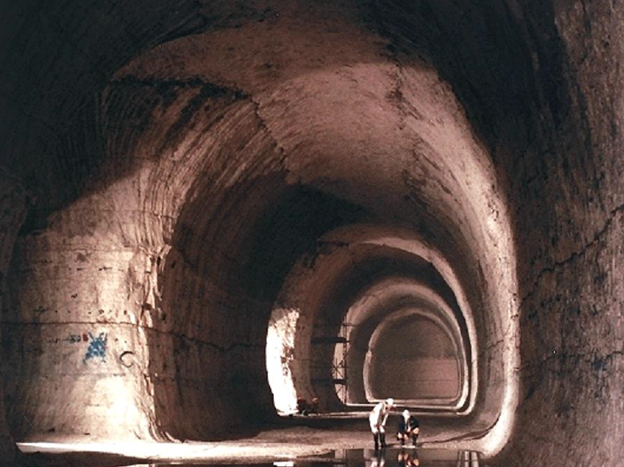
The image above is that of a mined storage cavern which would also work for water storage the same as the underground cisterns cut out of solid rock by King Herod on Masada. Surface water can be purified by mechanical separation, settling, plant purification and filtration methods prior to transfer as clean water into underground storage caverns. Mined storage caverns are presently being used in nations all over the world. The image above shows the massive-scale and size of how large these underground storage caverns can be.